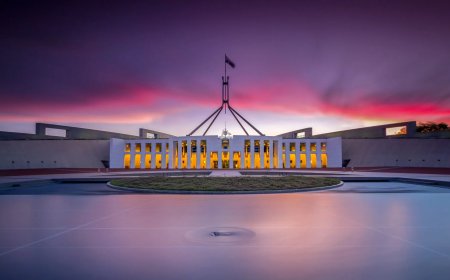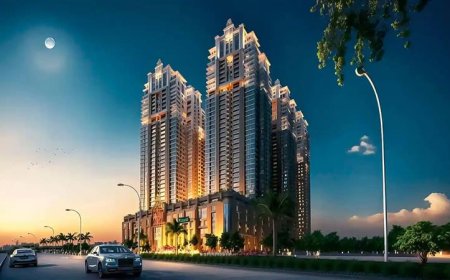How to Explore the Keeper of the Plains at Sunset
How to Explore the Keeper of the Plains at Sunset The Keeper of the Plains is more than a sculpture—it is a living symbol of cultural heritage, natural beauty, and spiritual resonance. Located at the confluence of the Big and Little Arkansas Rivers in Wichita, Kansas, this 44-foot-tall steel monument by Native American artist Blackbear Bosin stands as a beacon of Indigenous identity and regional p
How to Explore the Keeper of the Plains at Sunset
The Keeper of the Plains is more than a sculpture—it is a living symbol of cultural heritage, natural beauty, and spiritual resonance. Located at the confluence of the Big and Little Arkansas Rivers in Wichita, Kansas, this 44-foot-tall steel monument by Native American artist Blackbear Bosin stands as a beacon of Indigenous identity and regional pride. But to witness the Keeper at sunset is to experience something transcendent: a moment when light, shadow, and history converge in a spectacle that moves even the most seasoned travelers. This guide offers a comprehensive, step-by-step exploration of how to fully immerse yourself in the magic of the Keeper of the Plains at sunset—whether you’re a local resident, a first-time visitor, or a photography enthusiast seeking the perfect shot. We’ll walk you through logistics, timing, perspective, cultural context, and the subtle details that transform a simple visit into a profound experience.
Step-by-Step Guide
1. Plan Your Visit Around the Sunset Window
Timing is everything. The Keeper of the Plains is visible from multiple vantage points, but the most powerful experience occurs during the 20–30 minutes surrounding sunset. This window is when the sun dips below the western horizon, casting long, golden rays across the river and illuminating the sculpture’s intricate flame-like structure. To determine the exact sunset time for your visit, use a trusted weather or astronomy app such as Time and Date or Sun Surveyor. Input your location as “Keeper of the Plains, Wichita, KS” to get precise data. Arrive at least 45 minutes before sunset to secure your preferred viewing spot and allow time to acclimate to the environment.
2. Choose Your Viewing Location
There are three primary viewing areas, each offering a distinct perspective:
- The Main Observation Plaza – Directly across the river from the sculpture, this is the most popular and accessible spot. It features paved walkways, benches, and interpretive signage. This is ideal for photography, especially if you want the full frontal view of the Keeper with the river reflecting its silhouette.
- The Riverwalk Trail (East Bank) – Follow the paved Riverwalk path south from the plaza for approximately 0.7 miles. This route offers a diagonal, elevated perspective and is less crowded. It’s excellent for capturing the Keeper framed by trees and the curve of the river.
- The North Bank Parking Area – Located near the intersection of Kellogg and Broadway, this spot provides a wide-angle view with the downtown Wichita skyline in the background. Best for wide-lens photography and capturing the Keeper against urban lights as dusk transitions to night.
For the most immersive experience, consider visiting all three locations during your sunset session. Each reveals a different facet of the sculpture’s presence in the landscape.
3. Prepare Your Equipment
While you can enjoy the Keeper with nothing more than your eyes, bringing the right tools enhances both your experience and your ability to preserve it:
- Camera with Manual Settings – A DSLR or mirrorless camera allows you to control aperture, shutter speed, and ISO. Use a tripod to stabilize long exposures as light fades.
- Wide-Angle Lens (16–35mm) – Essential for capturing the full height of the sculpture and its surrounding environment.
- Neutral Density (ND) Filter – Helps manage bright skies during twilight, preventing overexposure while retaining detail in shadows.
- Remote Shutter Release – Minimizes camera shake during long exposures.
- Flashlight or Headlamp – For navigating pathways after dark and reading signage.
- Comfortable Clothing and Footwear – Even in warmer months, evening temperatures near the river can drop. Bring a light jacket and closed-toe shoes suitable for uneven terrain.
4. Arrive Early and Observe the Environment
Before the sun begins to set, take time to absorb the surroundings. Notice how the light changes on the water—first bright, then softening to amber. Watch for birds returning to roost along the riverbanks. Listen to the rustle of reeds and the distant hum of city life. The Keeper is not static; it responds to its environment. As the sky shifts from blue to violet, the sculpture’s steel surface begins to glow, absorbing the last direct rays before the ambient light takes over. This transition is where the true magic happens.
5. Capture the Flame Effect
The Keeper’s design incorporates a central flame that is illuminated nightly after sunset. This is not a real fire, but a series of gas jets that create a dynamic, flickering glow. To photograph this effect effectively:
- Set your camera to manual mode with an aperture of f/8–f/11 for sharpness across the frame.
- Use a shutter speed between 5–15 seconds to capture the motion of the flame.
- Keep ISO low (100–400) to reduce noise.
- Focus manually on the base of the sculpture where the flame emerges, as autofocus may struggle in low light.
Shoot in RAW format to preserve maximum detail for post-processing. The flame’s color varies slightly depending on atmospheric conditions—sometimes appearing orange, other times amber or even crimson. This variation adds depth and unpredictability to your images.
6. Engage with the Cultural Narrative
The Keeper of the Plains was dedicated in 1974 and represents the spiritual connection between Native American tribes and the land. The sculpture depicts a Native American figure holding a torch aloft, symbolizing the eternal flame of the Great Spirit and the unity of all people. Take a moment to read the plaques located near the observation deck. They recount the story of the sculpture’s creation, the collaboration between Blackbear Bosin and the city of Wichita, and the significance of the confluence of the two rivers—a sacred site for the Wichita, Kiowa, and other Plains tribes.
Consider listening to an audio guide or downloading a podcast episode about the Keeper before your visit. Many local cultural centers offer free downloadable content that provides context beyond the physical monument. Understanding the story behind the sculpture transforms your visit from a scenic stop into a meaningful cultural encounter.
7. Respect the Space and Community
The Keeper of the Plains is not just a tourist attraction—it is a place of reverence. Avoid climbing on the sculpture, blocking pathways, or playing loud music. Many locals visit at sunset for quiet reflection, prayer, or meditation. Be mindful of others. If you see individuals sitting silently, bowing, or leaving offerings (such as feathers or tobacco), observe quietly. These acts are deeply personal and rooted in tradition.
Do not litter. Bring a small bag for trash and dispose of it properly. The surrounding park is maintained by volunteers and local organizations who work tirelessly to preserve its sanctity. Your respect ensures that future visitors can experience the same serenity.
8. Extend Your Experience into Nightfall
After the flame is fully lit and the sky has deepened to indigo, stay for another 15–20 minutes. The Keeper, now fully illuminated, becomes a silhouette against the emerging stars. The river reflects the lights of the city and the glow of the sculpture, creating a mirror-like effect that is both surreal and calming. This is the perfect time to meditate, journal, or simply sit in stillness.
If you’re visiting during warmer months, you may hear live music from nearby events at the Riverfront Plaza or the Wichita Art Museum. These are often free and family-friendly, offering a gentle cultural extension to your sunset ritual.
Best Practices
1. Visit Year-Round, but Know the Seasons
The Keeper is accessible 24/7, but each season offers a different atmosphere:
- Spring (March–May) – Mild temperatures, blooming wildflowers along the riverbanks, and clear skies make this ideal for photography. Evening breezes can be cool, so layer clothing.
- Summer (June–August) – Long days mean sunset occurs later (8:30–9:00 PM). The heat can be intense during the day, so plan your arrival for late afternoon. Mosquitoes may be active near the water—bring repellent.
- Autumn (September–November) – Golden aspen and cottonwood trees frame the sculpture beautifully. Sunset occurs earlier (7:00–7:30 PM), allowing for a more relaxed pace. Crisp air enhances clarity for photography.
- Winter (December–February) – Fewer crowds and snow-dusted riverbanks create a hauntingly beautiful scene. The flame appears more vivid against cold, dark skies. Dress warmly—temperatures can dip below freezing.
2. Avoid Peak Tourist Hours
While the Keeper is popular, weekends and holidays (especially Memorial Day, Fourth of July, and Labor Day) bring large groups and traffic congestion. For a more intimate experience, visit on a weekday—Tuesday through Thursday are typically the quietest. Arriving 45 minutes before sunset ensures you’ll have the best spots without competition.
3. Use Natural Light to Your Advantage
Don’t rely on artificial lighting. The true power of the Keeper at sunset lies in the interplay of natural and ambient light. Avoid using your phone’s flash or high-intensity LED lights. Instead, use the last rays of daylight to illuminate the sculpture’s texture, then let the flame take over as darkness falls. The contrast between warm and cool tones creates a dynamic visual narrative.
4. Practice Ethical Photography
If photographing people, always ask permission. Many visitors are there for personal reasons—family gatherings, proposals, or quiet contemplation. Never obstruct someone’s view for the sake of a shot. If you’re using a drone, note that flying over the Keeper is prohibited without a special permit from the city. Respect the airspace and the sanctity of the site.
5. Connect with Local Knowledge
Engage with local artists, historians, or Indigenous community members if you have the opportunity. The Wichita Native American Cultural Center, located nearby, occasionally hosts sunset talks or storytelling events. These gatherings provide authentic insight into the spiritual and historical meaning of the Keeper. Even a brief conversation with a local guide can deepen your understanding far beyond what any brochure can offer.
6. Document Your Experience Thoughtfully
Keep a journal or voice memo recording your impressions. Note the color of the sky, the sound of the wind, the temperature, and how the sculpture made you feel. These personal records become invaluable over time, especially if you return year after year. You’ll begin to notice subtle changes—the way the flame dances differently on a humid night, or how the river’s reflection shifts with seasonal water levels.
7. Share Responsibly
If you post photos or stories online, tag the official Keeper of the Plains social media accounts and use hashtags like
KeeperOfThePlains, #WichitaSunset, and #NativeAmericanHeritage. Avoid using the image as a mere backdrop for selfies without context. Elevate the conversation by sharing what you learned, not just what you saw.
Tools and Resources
1. Recommended Apps
- Sun Surveyor – Maps sun and moon paths in real time. Use the AR mode to preview how the sun will align with the sculpture at your chosen time and location.
- PhotoPills – Combines sunset timing, golden hour calculations, and augmented reality overlays to plan your shot composition.
- Wichita Riverwalk Trail Map – Official city app with interactive maps of walking paths, restrooms, and parking.
- Google Earth – Use the historical imagery feature to see how the area around the Keeper has changed since 1974.
2. Books and Media
- “The Keeper of the Plains: A Symbol of Unity” by Dr. Linda White – A scholarly yet accessible account of the sculpture’s creation and cultural impact.
- “Blackbear Bosin: Keeper of the Southern Plains” (Documentary, 2018) – A 45-minute film produced by the Kansas Historical Society, featuring interviews with Bosin’s family and tribal elders.
- “Echoes of the River: Native Voices of the Arkansas” – A collection of oral histories from Indigenous communities connected to the confluence.
3. Official Websites and Contacts
- City of Wichita Parks & Recreation – wichita.gov/parks – For updates on events, maintenance, and safety advisories.
- Wichita Art Museum – wichitaartmuseum.org – Offers guided sunset tours and rotating exhibits on Plains Indigenous art.
- Wichita Native American Cultural Center – wichitanativecenter.org – Hosts cultural workshops and seasonal ceremonies.
4. Photography Gear Recommendations
- Camera: Sony A7 IV, Canon EOS R6 II, or Nikon Z6 II
- Lens: Tamron 17-28mm f/2.8 or Canon RF 15-35mm f/2.8
- Tripod: Manfrotto Befree Advanced or Peak Design Travel Tripod
- ND Filter: NiSi 10-stop or Lee Filters Big Stopper
- Bag: Lowepro ProTactic 450 AW II for weather-resistant storage
5. Local Guides and Workshops
Several local organizations offer guided sunset walks and photography workshops:
- Wichita Photography Club – Monthly sunset meetups at the Keeper with instruction on low-light techniques.
- Native Voices of Kansas – Cultural storytelling tours that combine history, poetry, and observation.
- Kansas Nature Conservancy – Eco-tours focused on the river ecosystem and its connection to Indigenous land stewardship.
Real Examples
Example 1: The Photographer Who Captured the Flame in Motion
In 2021, local photographer Marcus Delgado spent three consecutive evenings at the Keeper, returning each time at slightly different times to test exposure settings. On the third night, a sudden gust of wind caused the flame to flicker erratically. He set his shutter speed to 12 seconds and captured a single frame where the flame appeared as a swirling ribbon of light against the darkening sky. The image, titled “Breath of the Earth,” won first place in the Kansas Landscape Photography Awards and was later displayed at the Smithsonian’s National Museum of the American Indian. Delgado credits his success not to equipment, but to patience and presence: “I didn’t go to take a picture. I went to listen. And the flame spoke.”
Example 2: The Family Who Returned Every Year
For 18 years, the Ramirez family has visited the Keeper every summer solstice. They began after the passing of their matriarch, a Cherokee elder who believed the confluence was a place where ancestors whispered. Each year, they bring a small offering of cornmeal and sit quietly as the sun sets. They’ve documented the changing seasons through Polaroids, and their collection now fills a scrapbook passed down to their grandchildren. “It’s not about the monument,” says their daughter, Elena. “It’s about the silence between the moments. That’s where we find her.”
Example 3: The Student Who Turned a Visit Into a Thesis
During her senior year at Wichita State University, art history major Priya Patel visited the Keeper at sunset for the first time as part of a field study. She was struck by how the sculpture’s form changed depending on the viewer’s angle and the time of day. She spent the next six months photographing the Keeper at every hour, from dawn to midnight, and analyzed how light and shadow influenced perception. Her thesis, “The Sculpture as a Living Calendar,” argued that the Keeper functions not just as a static monument, but as a dynamic timekeeper that reflects seasonal, cultural, and spiritual rhythms. Her work was later published in the Journal of Indigenous Public Art and is now used in curriculum at three Midwestern universities.
Example 4: The Tourist Who Didn’t Know What to Expect
James Chen, a software engineer from Seattle, visited Wichita on a whim after reading a single sentence in a travel blog: “The Keeper of the Plains at sunset feels like the earth is breathing.” He arrived with no camera, no plan, and no expectations. He sat on a bench and watched. For 40 minutes, he didn’t move. He later wrote: “I didn’t see a statue. I saw a heartbeat. I didn’t hear wind—I heard memory. I didn’t leave with a photo. I left with a question: What am I holding onto that doesn’t belong to me?” That visit changed the trajectory of his life. He left his job, enrolled in a Native American studies program, and now leads cultural retreats in the Southwest.
FAQs
Is the Keeper of the Plains illuminated every night?
Yes. The central flame is lit nightly from dusk until 11:00 PM, weather permitting. In extreme wind or storm conditions, the flame may be temporarily extinguished for safety reasons. Check the City of Wichita Parks & Recreation website for real-time updates.
Can I touch or climb the Keeper of the Plains?
No. The sculpture is protected by law and is not accessible for climbing or physical contact. It is a cultural landmark and must be preserved for future generations. Respect the boundaries and enjoy it from the designated viewing areas.
Is there parking nearby?
Yes. Free parking is available at the Main Observation Plaza lot, the North Bank Parking Area, and along Kellogg Drive. During peak seasons, spaces fill quickly—arrive early or consider biking or walking from downtown.
Are dogs allowed at the Keeper of the Plains?
Dogs are permitted on leashes but are not allowed on the observation plaza itself. They may accompany you on the Riverwalk Trail. Always clean up after your pet and avoid disturbing wildlife or other visitors.
What’s the best time of year to photograph the Keeper?
Autumn offers the most dramatic lighting and color contrast, with golden foliage framing the sculpture. Spring is ideal for clear skies and fewer crowds. Winter provides stark, minimalist beauty. Summer is best for longer twilight hours and warmer temperatures.
Is the area safe at night?
Yes. The Keeper of the Plains is well-lit, patrolled by city security, and frequented by locals. However, as with any public space, remain aware of your surroundings. Stick to main pathways and avoid isolated areas after dark.
Can I host a private event or proposal at the Keeper?
Small, quiet gatherings are permitted without a permit, as long as they do not disrupt public access or involve amplified sound. For larger events (10+ people), contact the City of Wichita Parks & Recreation to obtain a special use permit.
Are there restrooms or water fountains nearby?
Yes. Restrooms and water fountains are located at the Main Observation Plaza and near the Riverwalk Trailhead. They are open daily from 6:00 AM to 10:00 PM.
Can I bring food or drink?
Light snacks and bottled water are permitted. Avoid greasy or messy foods that may attract wildlife. Please dispose of all trash properly—littering is strictly prohibited.
Is there an admission fee?
No. The Keeper of the Plains and its surrounding park are free and open to the public 24 hours a day, 365 days a year.
Conclusion
To explore the Keeper of the Plains at sunset is to step into a moment that exists beyond time. It is not a destination to be checked off a list, but a threshold to be crossed—a space where land, light, and legacy intertwine. The sculpture does not demand attention; it invites stillness. The flame does not shout; it whispers. And the river? It remembers.
This guide has provided you with the tools, timing, and traditions necessary to approach the Keeper with reverence and intention. But the most important element remains yours alone: your presence. Bring curiosity. Bring silence. Bring an open heart. The Keeper has stood for nearly fifty years, witnessing countless sunsets, countless stories, countless souls. It does not care if you are famous, wealthy, or skilled. It only asks that you show up—truly show up—and bear witness.
When you return home, you may find that the image of the Keeper lingers—not in your camera roll, but in your bones. You may hear the wind in the reeds when you close your eyes. You may feel the warmth of the flame even on the coldest nights. That is the power of this place. It does not just exist in Wichita. It exists within you.
Go. Watch the sun fall. Listen to the flame. Let the river carry your thoughts. And when you leave, leave nothing behind but respect—and perhaps, a new way of seeing the world.






























